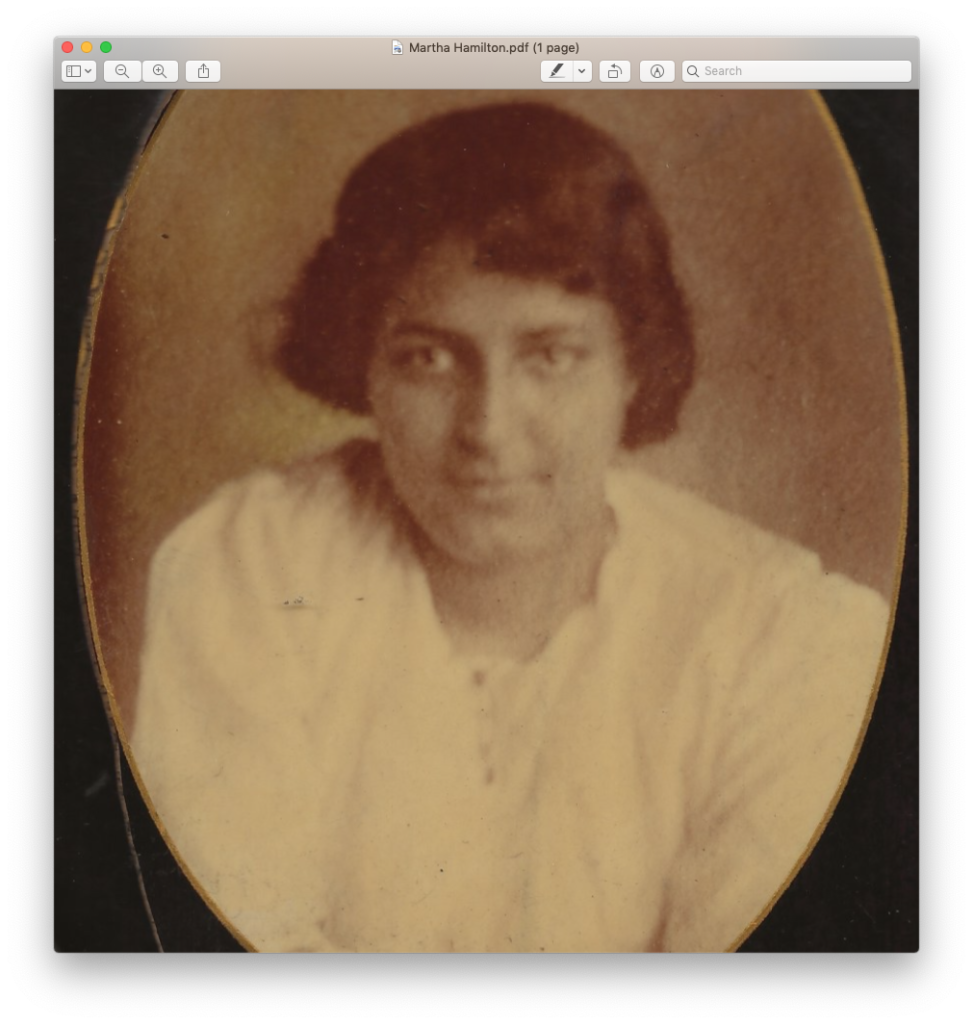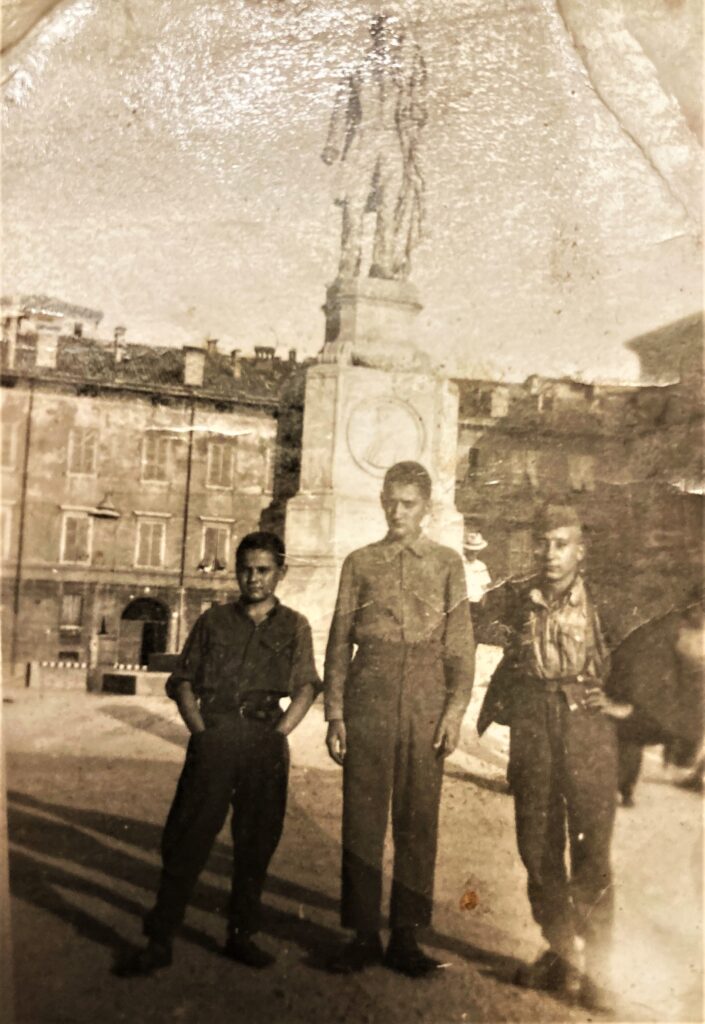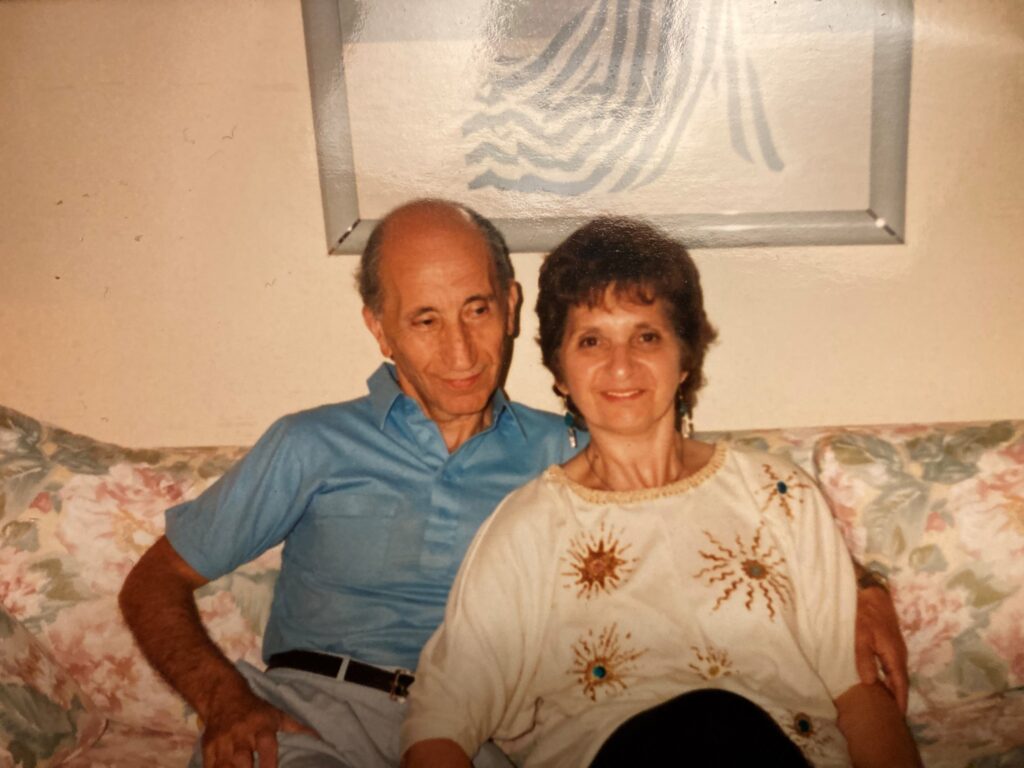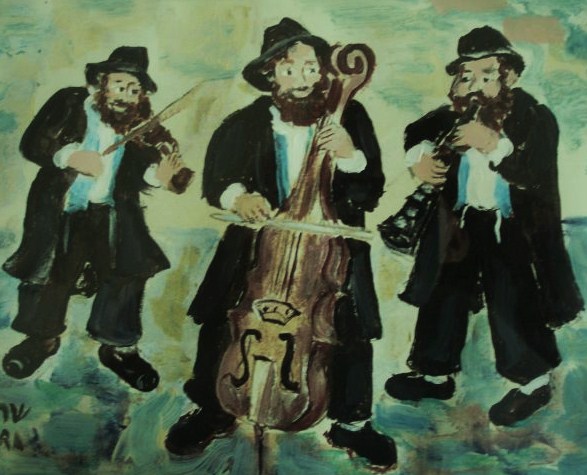Monday Musicale with the Maestro – December 14, 2020 – A Month of Holiday Music, Part 2: Celebrating Chanukah
I never knew my grandparents because they all died prematurely. As a consequence, the passing on of family lore was sketchy and sometimes inaccurate. For instance, my father said often when I was a boy that his grandfather, “Pop” Moody, was “a full-blooded Cherokee Indian.” But when my nephew did a DNA test and laboriously researched our background, he found out that Pop Moody was not Native American at all. Like many African Americans of his time (ca. 1869-1930) with “sharp features” and a certain jaw line, he may have tried to pass as Native American to partially erase the stigma of being Black.
Another part of our family lore was that my maternal great-grandmother (Jennie Peterson) was Jewish—and according to my nephew’s research this is indeed correct. She did not marry Mr. Hamilton, who was African American, but gave birth to my grandmother, Martha Hamilton. About nine months ago, I mentioned this to some of my Jewish friends who said conclusively that because the Jewish blood comes from my mother’s side of the family, I can identify as Jewish if I choose to. ME—Jewish? Who knew?! Here is a photo of Martha Hamilton from around the turn of the century.

I doubt this genealogical revelation will cause me to self-identify in a different way. But this recent discovery about my heritage has encouraged me to explore the history of my “other people.” As a result, Chanukah (the Jewish Festival of Lights celebrated from December 10th-18th this year) now has a more personal meaning for me.
In 1996, when I began my 20-year tenure as Resident Conductor of the North Carolina Symphony, I programmed a medley of Chanukah songs for the holiday program. After we’d performed it twice, NCS violist Sandy Schwarcz (my friend from our teen years) complained about the quality of the piece, recommending instead a much better arrangement by her husband, Terry Mizesko (whose Appalachian Lament we featured in our November 16th Monday Musicale.) Well, I thought, she IS Jewish and Terry IS a wonderful composer. After studying the conductor’s score and a recording, I realized that Terry’s piece is indeed the finest tribute to Chanukah music I had ever heard—and still is, 25 years later!
I’ve performed the work many times with the North Carolina Symphony, and it’s been in the concert repertoire of the Durham Symphony Orchestra for five years. In talking to Terry about the genesis of A Chanukah Celebration, I wanted to know more about its dedicatee, George Schwarcz, the father of his wife, Sandy.
Growing up, I knew her entire family, which consisted of her parents, three brothers, and Sandy. When visiting their home as a teen, I always found Mr. Schwarcz to be a dignified and warm gentleman. What I did not learn until years later, when Sandy and I were attending Oberlin Conservatory together, was that her father had somehow survived one of the worst concentration camps in the Third Reich. For this article I interviewed Terry and Sandy on their back porch on an unseasonably warm day this December. What I heard from Sandy about her father was so moving that I knew that this article was going to have a broader theme.
George Schwarcz was born on December 23, 1928 near the Hungarian town of Debrecen. He was 16 in early 1945 when his entire family was seized by the Nazis and placed in different concentration camps. George was never again to see his father, who perished in a camp. George was first placed in a work camp, enduring horrifying conditions and beatings by sadistic Nazi guards. No one knows how long he was there. But the worst was yet to come, as he was sent to Mauthausen, a camp 12 miles from Linz, Austria. Wikipedia asserts that
In the offices of the Reich Main Security Office, it was referred to by the nickname ‘Knochenmühle’—the bone-grinder. The regime at Mauthausen was one of the most brutal and severe. . .The inmates suffered not only from exceptionally hard labour but also from overcrowded huts and constant abuse and beatings by the guards and malnutrition.
Sandy’s father told her about a time when food rations (usually 600-1000 calories a day) disappeared entirely, and George risked his life to crawl under an electrified barbed-wire fence and seize a potato a few yards away, to share with fellow sufferers. As Terry Mizesko pointed out to me, George would automatically have been killed if an attentive guard had noticed him outside the fence. On May 5, 1945, the Allies liberated Mauthausen, and those freed began a desperate search to find their loved ones.

Sandy said of this period in her father’s life, “I’m actually not sure about the details, but I do remember stories that he described of endless wandering without knowing where they were headed. The ultimate destination was home, and somehow they got there. Apparently my Dad was reunited with his older brother ‘along the way’ and eventually with his entire family back in Hungary (except, of course, his father). From there my Dad chose to come to the U.S., while the rest of his family went to Israel. In America he was sponsored by a place that housed refugees from the war, the Hebrew Union College (H.U. C.) in Cincinnati, Ohio.” He met his future wife Ann around 1946-7 in the office of the H.U.C., where she was working. They married in 1951 and were together 42 years.

One of the last happy memories Sandy has of her father was a joyous family Chanukah celebration in 1992. Sadly, he passed away in February 1993. Later that year, Terry Mizesko dedicated his new work A Chanukah Celebration to his father-in-law, and it was premiered by the North Carolina Symphony in December 1993.
The work is in three movements, all based on traditional Jewish songs. The first is a musical meditation on “Ma’oz Tzur” ( Rock of Ages), perhaps the most famous Chanukah song. The third movement is based on the Israeli national anthem “Hatikvah.” The middle movement—featured in our DSO audio today—is called “Chanukah Dances.” The piece begins with an expressive and atmospheric duet for clarinet and violin based on Klezmer music.

We then hear a series of transformations of several Chanukah songs. Then, inexorably, the pace gets faster and faster until the piece ends with colorful and exciting music reminiscent of the Horah, a traditional Jewish dance.
The Durham Symphony played “Chanukah Dances” on November 29, 2018, as part of our annual Holiday Pops concert at the Durham Armory. As you will hear, the Durham Symphony’s performance of the work received a wonderful response both from the orchestra and the audience. Even if you’re not Jewish (like myself, on certain days), I know you will be thrilled by this soul-stirring composition by Terry Mizesko.
Chanukah Dances from A Chanukah Celebration – Terry Mizesko
Durham Symphony Orchestra
William Henry Curry, Conductor and Artistic Director
Holiday Pops
Durham Armory, Durham, NC 11/29/2018
This year I would like to dedicate this blog to Chanukah and to the heroic life of George Schwarcz. As we face the uncertainties of 2021, let us be mindful of the incredible sacrifices that were made for us by our parents, our ancestors, and other patriotic Americans. This country has shown a remarkable resiliency in the face of dark times. However most of us have not yet been challenged in the way “ the greatest Generation” was. They triumphed over the traumas of World War Two, the Korean War, the Vietnam War, the turbulent civil rights era, and the assassination of several of our noblest public figures. It is our duty now to recognize and embrace the humanity of people who disagree with us and to be worthy of heroes like George Schwarcz who came before us.
William Henry Curry
Music Director
Durham Symphony Orchestra
Recording Engineer: Mark Manring
Comprehensive Editor (Text): Suzanne Bolt
Copy Editors: Marianne Ward and Tina Biello
Digital Layout and Publication: Tina Biello and Marianne Ward
Celebrating Maestro Curry’s 50 years conducting &
11 years with the Durham Symphony!
Enjoying the Music?
If you like what you’re seeing, please donate and let us know!
Ready to take advantage of the available tax credits for end of year donations? Please consider the Durham Symphony Orchestra
Funding is provided (in part) by the Durham Arts Council’s Annual Arts Fund, the N.C. Arts Council (a division of the Department of Natural and Cultural Resources), and a grant from the Triangle Community Foundation.



